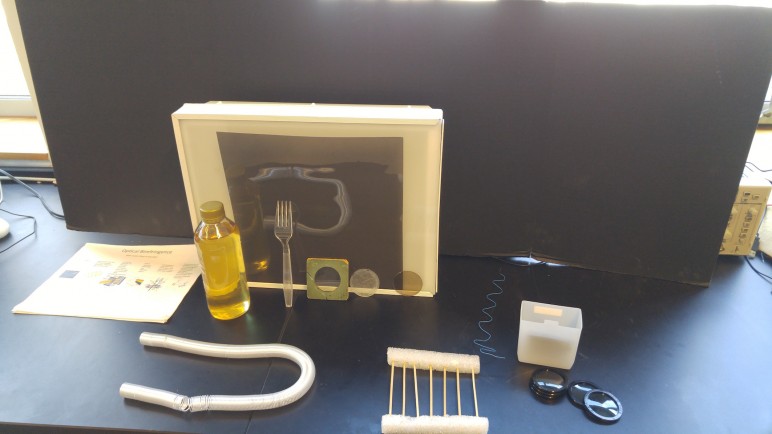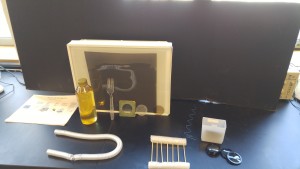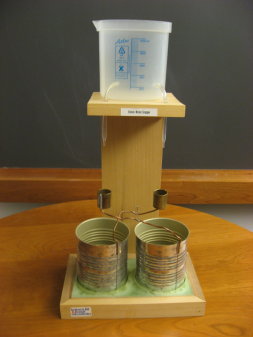Demos in this set include:
- Planar light source with large polarizing sheet
- Corn syrup
- Long spring
- Plastic fork
- Wafers of micah and benzoic acid crystals
- Cubes of calcite, selenite, and Iceland spar
- Disappearing cube
- Polarizer model (looks like a gate), with light model (wavy wire piece)
- Square and circular polarizers



